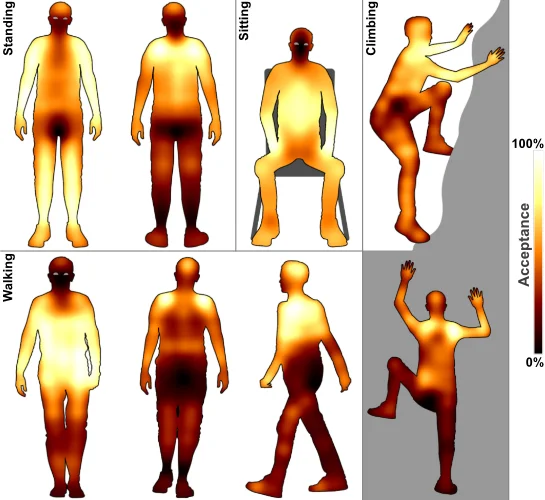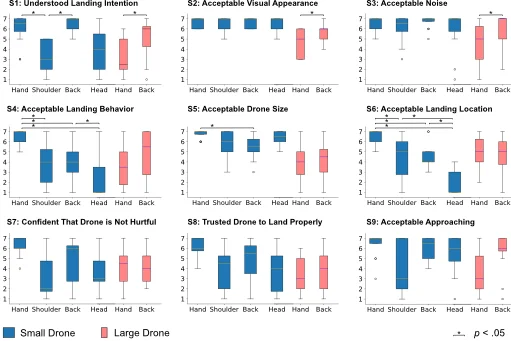Understanding Drone Landing on the Human Body

We envision the human body as a platform for fast take-off and landing of drones in entertainment and professional uses such as medical emergencies, rescue missions, or supporting police units. This new interaction modality challenges our knowledge of human-drone experiences, in which interaction usually occurs at a distance from the body. This work explores important factors for understanding the interplay between drones and humans. We first investigated the suitability of various body locations for landing in an online study (N=159). Our results, presented as body maps, show that the hand and upper back are particularly well-suited body locations. We further tested these findings in a follow-up study (N=12), in which participants experienced drones landing on their bodies through carefully designed and pre-recorded 360° videos. This immersion into the landing scenarios helped us to identify common themes and research approaches for different body parts. Taken together, the findings provide first insights into location preferences and themes for drones landing on the human body.
Findings


